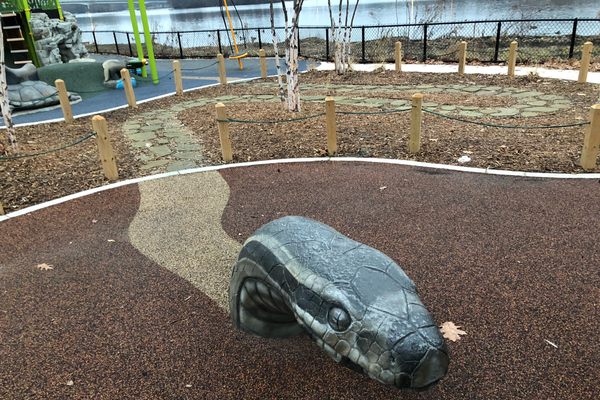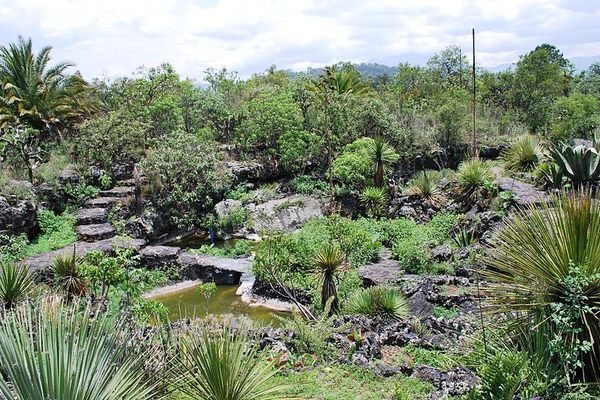Matthaei Botanical Gardens
These gardens recreate unique and endangered Michigan habitats.
Michigan is home to many rare and unusual habitats. You’ll find dry, grassy dunes bordering the Great Lakes; flat, pavement-like limestone barrens known as alvar, and cobble beaches where the soil is constantly waterlogged and the surface frequently scoured by storms. Sadly, most of these unique environments are threatened by human encroachment.
To educate the public about the importance of these ecosystems, the biologists and gardeners at the Matthaei Botanical Gardens of the University of Michigan have recreated several of them in a large outdoor garden.
Other floral arrangement also share the grounds at Matthaei, such as a bonsai and penjing garden; an herb knot garden filled with medicinal plants from around the world; a rock garden composed of low-growing plants adapted to exposed, windy mountaintops; an urban pocket garden designed to hide and beautify an unattractive gaggle of external utilities such as air-conditioners and water gauges; and more. The 90 acres of land surrounding the botanical gardens also feature walking trails through Michigan ecosystems such as a swamp, oak savanna, and beech-maple forests reclaiming former pasturelands.
The centerpiece at Matthaei is its large conservatory divided into three broad ecological types. The humid Tropical House features bromeliads, cycads, coffee, tree-ferns, and symbiotic ant-plants, among many others. Among the plants of the Temperate House, you can find papyrus, figs, olives, carnivorous bog plants, cork trees, a rare Wollemi pine, and other flora from milder, Mediterranean-like climates. Lastly, the Arid House features cacti, euphorbias, stone-mimicking Lithops, the unusual ribbon-like Welwitschia, and other succulent plants.
Know Before You Go
There is no admission charge at Matthaei, though donations are greatly appreciated. Parking is $1.80 per hour with a daily maximum of $5.
The trails are easy to walk, though it's not a bad idea to wear insect repellant in the summer.



























Follow us on Twitter to get the latest on the world's hidden wonders.
Like us on Facebook to get the latest on the world's hidden wonders.
Follow us on Twitter Like us on Facebook